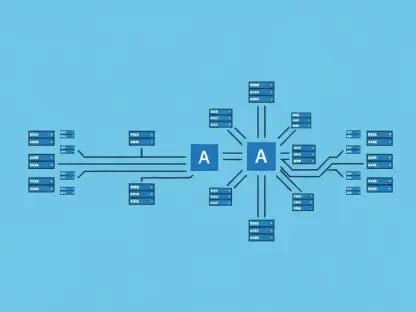In the world of cloud-native live production solutions, Vijay Raina stands as a guiding light. Possessing an extensive background in enterprise SaaS technology, Raina excels in software design and architecture. Today, he shares his insights into Chyron LIVE’s journey through the AWS Foundational Technical Review and its place in the evolving broadcast landscape.
What prompted Chyron LIVE to undergo the AWS Foundational Technical Review?
Chyron LIVE’s decision to pursue the AWS Foundational Technical Review was driven by a desire to assure both current and potential users of its reliability and security. The review provides a formal verification of our adherence to AWS’s well-architected framework and best practices for cloud-native applications. It signals to our users that we are committed to offering a robust and efficient solution built on a trusted platform.
Could you explain how the AWS FTR process works?
The AWS FTR process begins with a self-assessment, where we evaluate our solution against a checklist of AWS’s stringent requirements. This phase involves a detailed analysis of our architecture to ensure all aspects adhere to best practices. Once we submit our self-assessment, AWS experts conduct a review. They may ask for additional clarifications, allowing us to showcase how we have addressed any identified risks effectively, ensuring our solution meets the necessary standards for operational excellence and security.
What specific features of Chyron LIVE make it suitable for cloud-native live production?
Chyron LIVE boasts features like broadcast-grade graphics, multi-camera and video input switching, illustrated replay, and audio control, all accessed from an intuitive single user interface. These capabilities mirror traditional setups but without the need for extensive physical infrastructure, such as server-grade devices in control rooms or broadcast trucks. This cloud-native solution allows users to operate everything through an HTML browser, significantly lowering entry barriers in terms of cost and complexity.
How does Chyron LIVE’s use of the AWS Cloud benefit users in terms of infrastructure and cost?
Utilizing the AWS Cloud provides flexibility and scalability, letting users scale their resources up or down based on demand, which is particularly cost-effective for varying workloads. This cloud approach eliminates the necessity of substantial hardware investments and maintenance costs associated with on-site setups, ensuring users pay only for what they need, which can be a tremendous cost saver.
Who are the primary audiences or customers for Chyron LIVE?
Chyron LIVE serves a diverse range of customers, from major broadcasters to educational institutions and small businesses. Major broadcasters benefit from its agility and scalability, delivering more content across multiple channels effortlessly. Meanwhile, smaller organizations can achieve the professional broadcast quality without the significant financial investments traditionally required.
What are the potential AWS co-selling opportunities that completing the FTR might unlock for Chyron?
By completing the AWS FTR, we open doors to significant co-selling opportunities with AWS. This collaboration can lead to wider reach and more strategic partnerships, as AWS may promote Chyron LIVE as a part of their ecosystem. This not only enhances our visibility but also provides us leverage in the market by aligning with AWS’s trusted brand.
Can you elaborate on Chyron LIVE’s adherence to the AWS Well-Architected Framework?
The AWS Well-Architected Framework serves as a foundational guideline ensuring that our product is built using proven best practices. Our adherence to this framework means that Chyron LIVE is optimized for efficiency, security, and reliability, all critical factors in cloud-based operations. It reflects our dedication to providing dependable solutions for our clients’ core operations.
How do cloud workflows in Chyron LIVE contribute to operational efficiency and cost savings?
Cloud workflows enable users to streamline production operations by reducing reliance on physical infrastructure, which increases flexibility and speed of deployment. This shift translates to significant cost savings, as users can quickly adjust resources to current needs without legacy infrastructure constraints. Moreover, cloud workflows offer collaborative capabilities that improve processes and productivity.
What are some of the future goals for Chyron LIVE in terms of enhancing broadcast workflows?
Looking ahead, Chyron LIVE aims to further simplify and enhance broadcast workflows by integrating more advanced features such as AI-driven analytics and enhanced interactive functionalities. Our goal is to ensure that our users remain at the forefront of technology, providing the tools necessary for innovative content creation and audience engagement.
How does Chyron ensure the quality, reliability, and security of Chyron LIVE in a cloud environment?
Chyron places immense importance on quality, reliability, and security. We continuously invest in rigorous testing and monitoring processes, leveraging AWS’s advanced security protocols to safeguard data and operations. Our commitment extends to regular updates and enhancements, ensuring that users consistently benefit from the latest technological advancements and security measures.
What kind of feedback have you received from early adopters or testers of Chyron LIVE?
Feedback from early adopters has been overwhelmingly positive, with users appreciating the platform’s ease of use and flexibility. Major broadcasters have noted how the solution’s scalability allows them to deliver content more efficiently, while smaller institutions have praised the cost savings achieved without sacrificing professional quality. The consensus is that Chyron LIVE significantly enhances the production landscape.
How does Chyron LIVE enhance the user experience when compared to on-site broadcast setups?
Chyron LIVE revolutionizes the user experience by offering unmatched accessibility and ease of use without the geopolitical and logistical constraints of physical setups. Users benefit from a unified platform that integrates critical production components, enabling them to streamline operations and increase focus on creative aspects. This shift empowers broadcasters to innovate without traditional limitations.
Do you have any advice for our readers?
Embrace cloud-native solutions and familiarize yourselves with cloud environments, as they represent the future of broadcast and production workflows. Stay informed about technological advancements and be open to integrating new tools that can simplify operations and drive creativity. Adaptability will be the key to success in an ever-evolving digital landscape.









